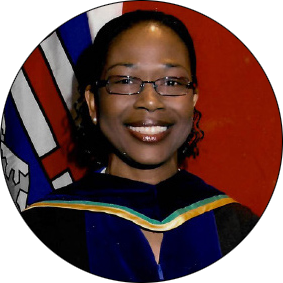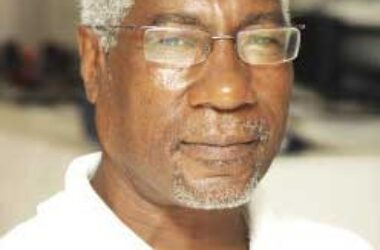
For too long our country, Saint Lucia, has been robbed of its true worth/value by an education system that has been crying out for innovation. A country cannot continue to improve in the 21st century, primarily, on its academic strength, but to an even greater extent, on its technical and vocational strength.
The Saint Lucian education system has, undoubtedly, produced a number of academic geniuses. Considering the brilliant academic success of two Saint Lucian scholars who became global icons–Sir Arthur Lewis who won a Nobel Prize for Economics and the Hon. Derek Walcott a Nobel Prize for Literature–it can be argued that the Saint Lucian education system is highly successful in educating students.
Wait a minute! Could we take a close look at the other side of the coin–the tails? A large number of students who have completed their secondary education exit the system every year. Some rejoice on their graduation day, knowing that they have performed excellently or on average, while others are experiencing psychological suffering, knowing fully well that they did not perform to the best of their abilities. The latter are the students who were unable or struggling to learn the concepts taught in their classrooms; they were the ones who failed to acquire basic literacy and numeracy skills that would enable them to aspire to higher education or careers of their choice.
This dismal situation begs the question: why do some students perform better in school academically than others?
All schools in the universe are diverse in several respects, and Saint Lucian schools are no exception. A typical classroom of thirty students represents enormous variety in terms of culture, ethnicity, language, cognitive ability/skill, interest, self-concept, preferred learning style, and socio-economic background. Despite the differences that exist in the classrooms, all students are taught using the same instructional approach, creating the illusion that one size fits all.
Besides, the education system is examination oriented, meaning that it operates on an examination-based education model, whereby students’ mastery of subject areas is measured through testing. Sadly, the Ministry of Education officials and school administrators tend to turn a blind eye to student diversity, and allow all students to write the same examinations year-after-year.
A case in point: firstly, are you, the Saint Lucian populace, aware that the traditional Common Entrance Examination in Saint Lucia has been replaced by the Caribbean Primary Exit Assessment (CPEA) examinations as the main assessment method for students’ entry into a secondary school? Recently, some 2055 students from 69 primary schools sat the first ever CPEA examinations administered by the Caribbean Examination Council (CXC). The Ministry of Education top official welcomed this new era of assessment by saying it will serve the candidates well because of the introduction of the internal assessment component as part of the overall examinations. The fact remains, in the final analysis, all students still had to write the same examination papers within the same time frame.
There are students who are academically inclined as opposed to those who are technically and vocationally inclined. As a professional, I have observed that if students are not academically inclined, there is a marketable skill(s) they are endowed with–technical (data analysis, accounting etc.) or vocational (construction, automotive, hair and beauty, etc.). Therefore, when it comes to the pedagogical landscape, it is certainly not a one-size-fits-all solution, and the same can be said of the new CPEA examinations. It is no wonder that there are many primary school students who were not academically inclined and performed poorly at the recent CPEA examinations, despite the internal component and the 8.79% increase in the National Mean over last year’s.
What the Saint Lucian education system (along with the other Caribbean education systems) needs urgently is not so much the “new” CPEA structure but, rather, an education model that will identify each student’s learning needs in every school throughout the island–whether academic, technical, vocational or a combination, and to cater to the individual needs of students. Technical/vocational skills can be cultivated from the get go, that is, from the infant and primary levels of education.
Based on the discussion, the following recommendations are in place for school reform in Saint Lucia, as well as the other Caribbean islands.
1. There should be restructuring of the CPEA examination. That is, the CPEA governing body should deliberately redesign the examination so that it would take into account the two major components–the academics and the technical/vocational to cater to the needs of all students writing the examination.
2. To ensure equity, each of the major components of the CPEA examination should be worth 50%–equal ratings.
3. All students should write both sections, that is the entire two-part examination paper. The two-day examination, which students sat at the recent CPEA examination (which required one day at the traditional Common Entrance) did not seem to have posed a problem to them. It is hopeful, therefore, that this time frame would also accommodate this improved design–two papers.
4. Generally, it is expected that students will perform exceptionally well on one or both examination papers, and their performances/results will determine their school placements, in terms of their academic or technical/vocational achievement.
5. Students who perform exceptionally well on both papers can decide their placement with the assistance of their parents/guardians and teachers. Such a decision would need to be indicated on a form prior to the commencement of the CPEA examinations, similar to the Common Entrance in terms of school choices.
6. Pure technical/vocational students are expected to perform excellently in their area like their pure academic peers. Consequently, both types of students should be given equal recognition via the media when results are publicized. Such measures would help to mitigate the stigma of non-academic students not being able to learn and are not very smart.
7. The technical/vocational curriculum should contain a well-structured design like the existing one.
8. A technical/vocational school should be established at strategic locations throughout the island to facilitate mastery of learning in the technical-vocational fields for secondary school students from Form One through Form Five. This is not to say that student academic achievement is not important in this educational context. It is just that the focus would be mainly on mastering technical/vocational skills.
If this initiative is not overlooked by the Saint Lucian Ministry of Education authorities and the CXC/CPEA governing body, it means that the education system in Saint Lucia and the neighbouring Caribbean would now be in a better position to help ensure all students a long and prosperous career when they exit the education system. By offering students their rightful place at the secondary level (either academic or technical/vocational), they would be more motivated, both intrinsically and extrinsically, to gain mastery of whatever skills they possess. In turn, they would engender more positive results in terms of their studies, attitude, behaviour, duties and responsibilities for self and society. As education stakeholders viewing the alarming societal trends, we must remember that the mind is a terrible thing to waste.












